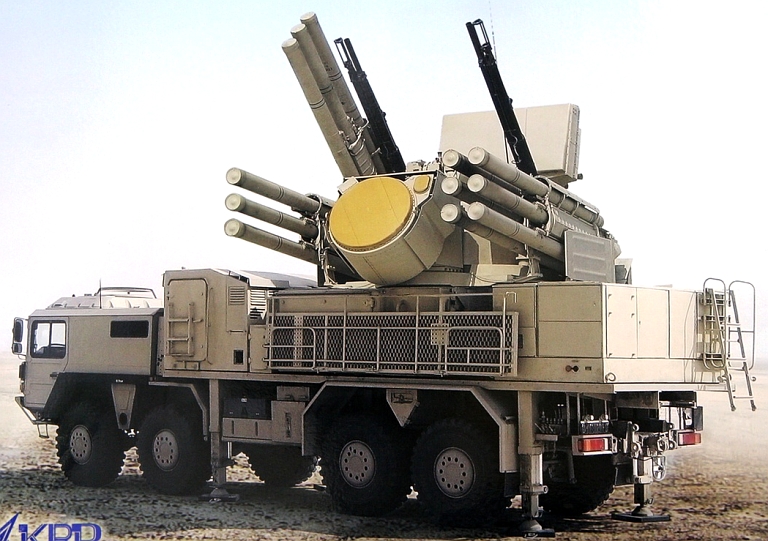
Bunch of details match with normal one, could be just a matter of standardisation but everything I've previously seen including official 22800 display model indicates -M is going to look more like Kashtan
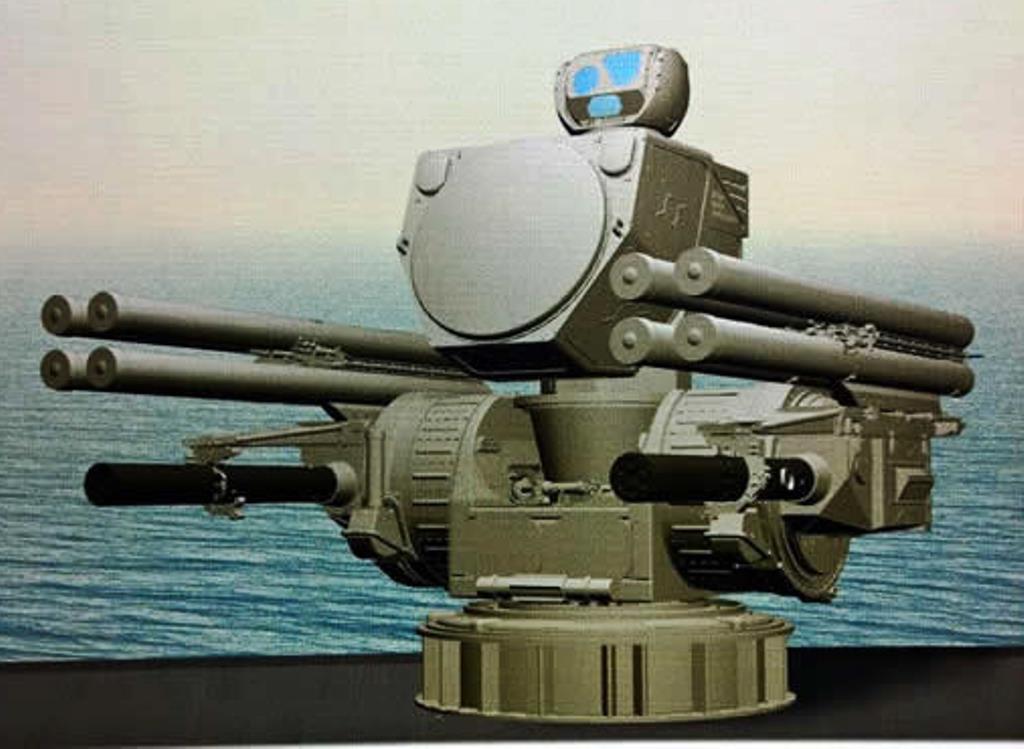
or


 Re: Naval Air Defence systems
Re: Naval Air Defence systems



 Re: Naval Air Defence systems
Re: Naval Air Defence systems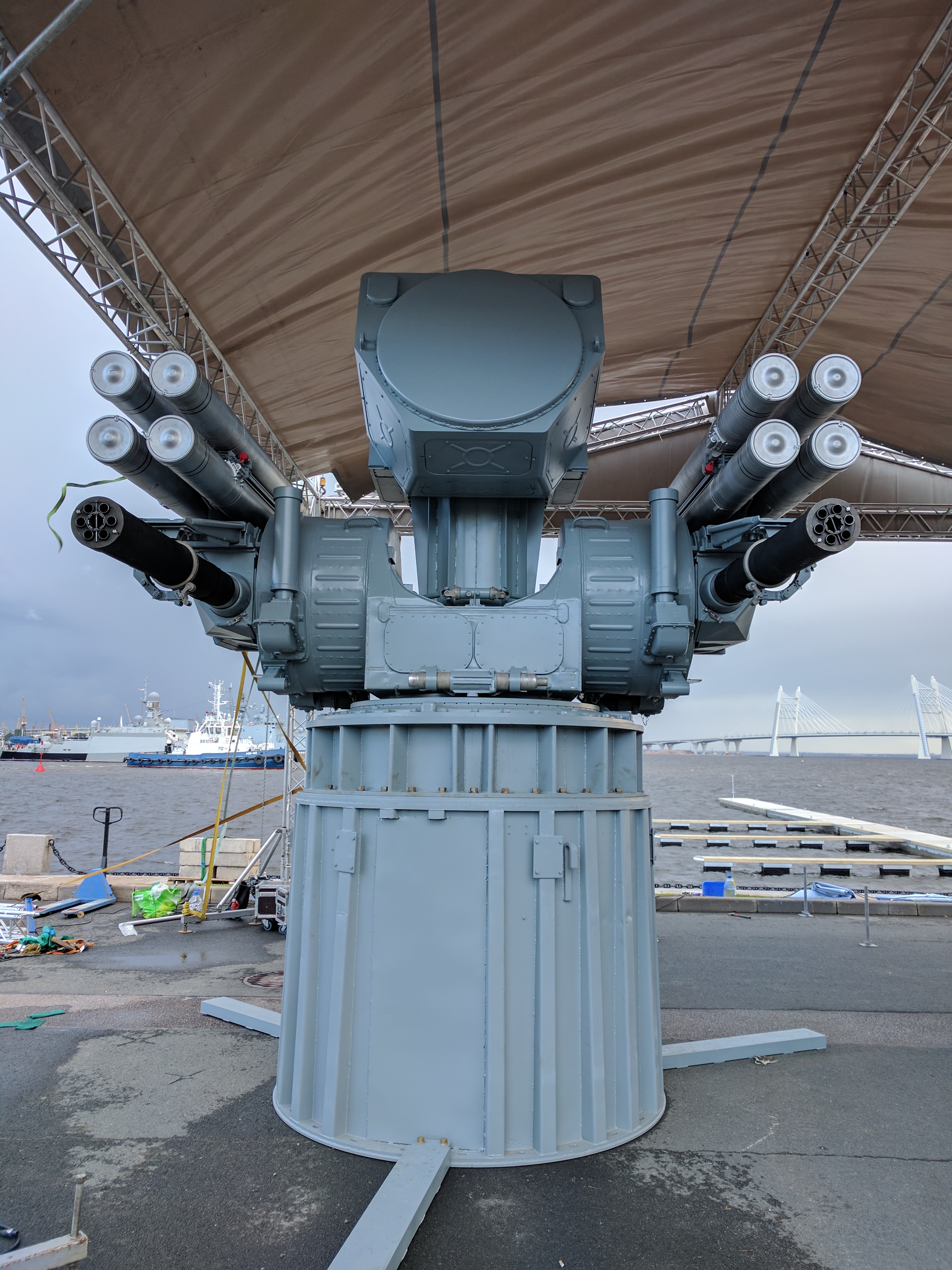

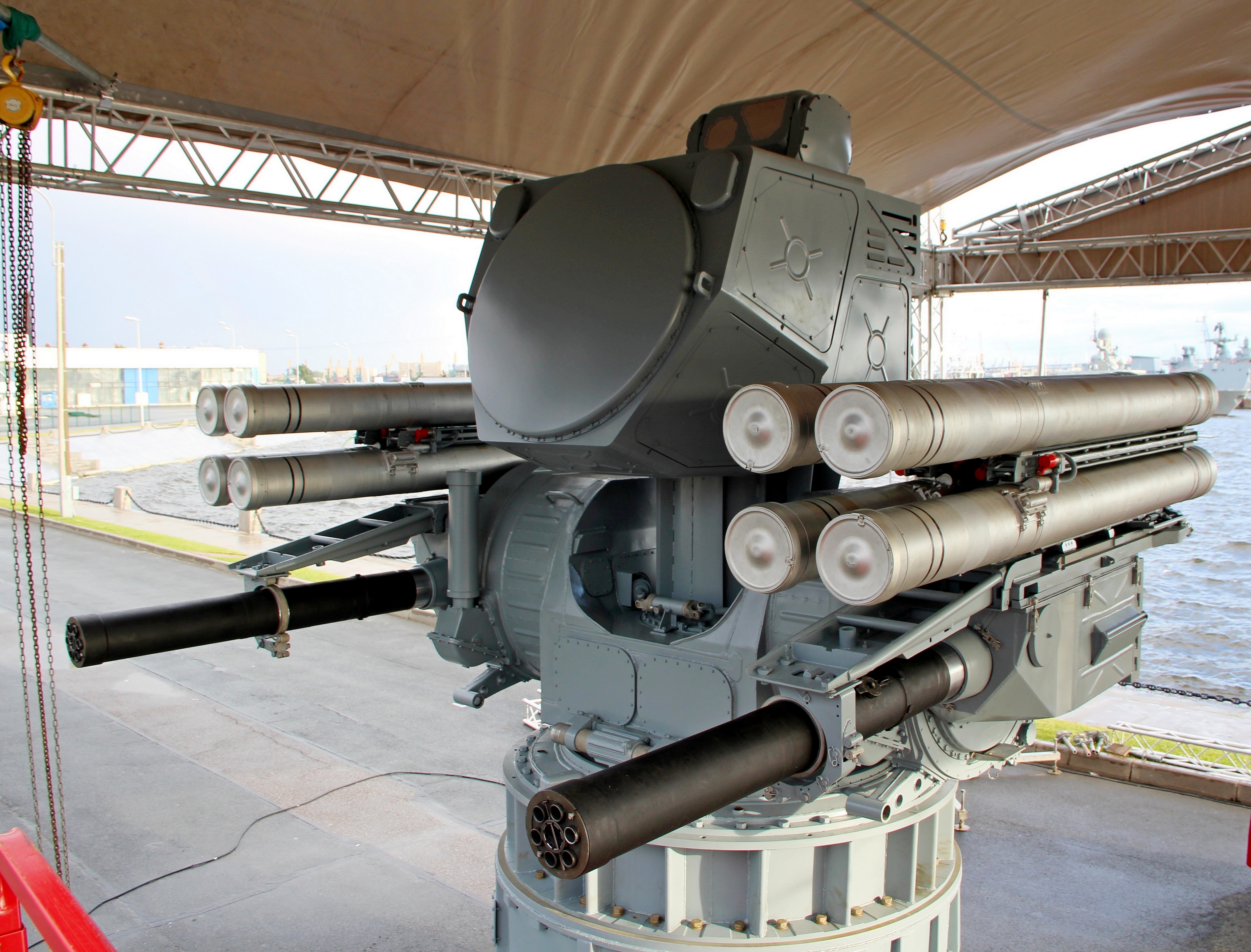
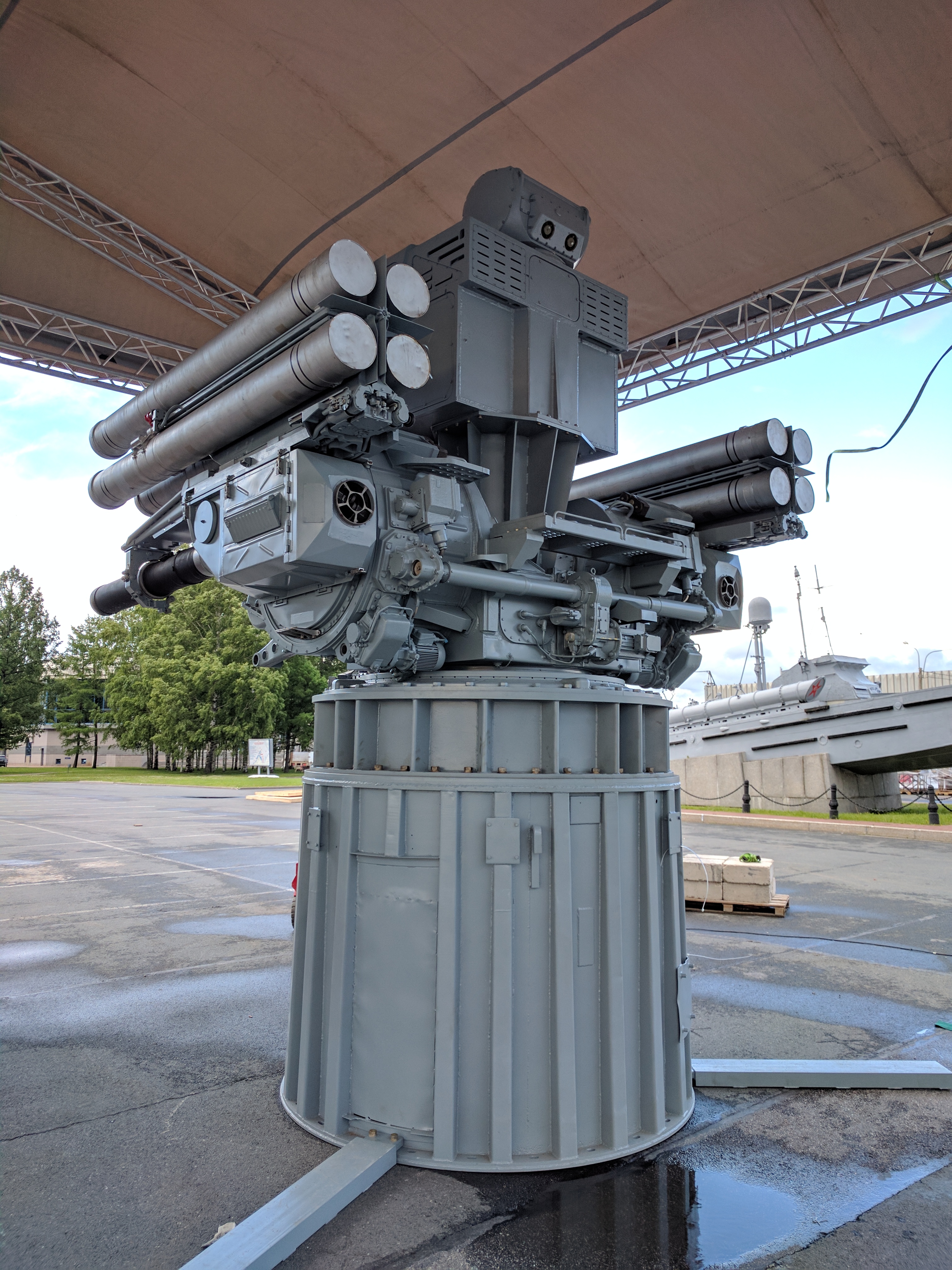
 Re: Naval Air Defence systems
Re: Naval Air Defence systems"One of the key imperatives of the cluster strategy of" armed "state corporation Rostec is the development and creation of new weapons, including the segment of anti-aircraft missile systems. Development of the "Pantsir-ME" complex is a logical element of the strategy. Create virtually every major complex systems require a fundamentally new scientific and technological solutions. As a result, the potential of striking complex "Pantsir-ME" has increased three or four times in comparison with the complex "Kashtan-M", - said General Director of the State Corporation Sergei Chemezov Rostec.
Thus, the affected area surface-to-air missile is increased from 10 to 20 kilometer range and from 3 to 15 km in height. All stages of the combat work - from search target before firing - are carried out in motion. The combined use of radar and optical control system provides all-weather capability and vsesutochnost his work. All processes are automated complex, the crew only provides monitoring and control.
High efficiency defeat PKR achieved through features embedded in SPAR "Pantsir-ME." Saved modular design of the complex: a command module and up to four combat units, depending on the ship class that allows you to build his defense flexibly. Combined Artillery missile arming provides effective engagement of all target types in the entire range of their operational use conditions, means and methods for counteracting from the perspectives of development up to the 2020-2025's.
Use in combat module complex "Pantsir-ME," Multifunction radar with a phased antenna array and the surface-to-air missile with a range of 20 km provides simultaneous firing four goals, as well as the defeat of the new types of small and upgraded ASM means of air attack and surface targets. Combat unit can work both independently and as part of the four modules of the battery. The complex may be placed on vehicles with a displacement of 300 tons.





 Re: Naval Air Defence systems
Re: Naval Air Defence systems Re: Naval Air Defence systems
Re: Naval Air Defence systems

 Re: Naval Air Defence systems
Re: Naval Air Defence systems
 Re: Naval Air Defence systems
Re: Naval Air Defence systemsGhibka with latest Igla version?Komar SAM

 Re: Naval Air Defence systems
Re: Naval Air Defence systemsThat's what I would think, but is there any way to tell definitively whether it's that or some sort of wire guidance? I tried searching Google images for rear-facing pictures of other Russian torpedoes to compare the connector on the Shkval with the wire guidance connector on them, but I couldn't find any.hoom wrote:I think its got a limited inertial guidance so that might be where the course gets programmed?

 Re: Naval Air Defence systems
Re: Naval Air Defence systems
 Re: Naval Air Defence systems
Re: Naval Air Defence systems Re: Naval Air Defence systems
Re: Naval Air Defence systemsnastle77 wrote:http://pvo.guns.ru/naval/m11.htm
I'm not a russian speaker please need help with this article
my main question is , was the M-11 Shtorm SAM actually a dual role weapon ? can be used in ASUW role as well ?
thanks
 Nelson Photo
Nelson Photo A. Karpenko
A. Karpenko A. Karpenko
A. Karpenko
 Re: Naval Air Defence systems
Re: Naval Air Defence systemsSeigSoloyvov wrote:nastle77 wrote:http://pvo.guns.ru/naval/m11.htm
I'm not a russian speaker please need help with this article
my main question is , was the M-11 Shtorm SAM actually a dual role weapon ? can be used in ASUW role as well ?
thanks
The universal shipborne complex M-11 was developed in accordance with the Resolution of the Council of Ministers of Ukraine No. 846-382 of July 25, 1959. The head of the system as a whole was NII-10 GKRE, chief designer GN Volgin. The TsKB-34, the TsNII-173 guidance drives, the NII-48 radio exploders, the NII-6 warhead, the NII-125 engine charges, etc., were engaged in launchers.
Initially, the M-11 complex with the CM-102 launcher was intended for ships of Prospect 1126. But the works on Prospect 1126 were terminated by Resolution No. 565-236 of 21.06.1961, in connection with which work was stopped on the M complex -eleven. But in a short time - on 27.07.1961 the Resolution of the Council of Ministers No. 846-382 issued on the continuation of work on the M-11, but already for the ship pr. 1123.
NII-10 in April 1962 completed the outline design of the M-11 missile complex and handed it over to the customer. In the process of developing a draft design, it was found out that it is impossible to build an SU M-11 on the basis of the M-1 complex because of the requirement of universality (over surface ships), doubling the range and noise immunity.
In May 1962, after the completion of the preliminary design of the project, 0KB-2 fundamentally changed the aerodynamic scheme and dimensions of the V-611 rocket, which required the complete processing of the SM-136 PU, the control loop, etc.
A new draft project was approved only in 1963.
Fire control system "Thunder"
The "Thunder" control system has two radar homing channels for one purpose, working to increase noise immunity in different wave bands and using a single-pulse directing method. At different frequencies, there are two radar channels for remote control of two missiles. This ensures that it is not possible to simultaneously suppress the two target and two missile channels with a single aiming and moving noise interference of high power.
Antenna post of the "Thunder" system on the "Kerch" BCP in Sevastopol in 1985Nelson Photo
ZRK has an original design of the antenna control system post. The two lower latticed parabolic tracking antennas are mounted on the front surface of large box-shaped containers, in which the radioelectronic equipment of the target and missile channels is located. The two upper missile tracking antennas are installed on top of the containers, and between them is a horn antenna for transmitting commands. In the latest modifications, the horn antenna is replaced with a parabolic antenna and placed between the target antennas.
Anti-aircraft guided missile 4K60
Scheme of anti-aircraft missiles B-611 (4K60)A. Karpenko
The anti-aircraft missile V-611 (4K60), developed at the CB "Fakel", is a single-stage, solid fuel. The maximum flight speed is 1200 m / s, the average flight speed in the affected area is 650-800 m / s. The starting mass of the rocket is 1844 kg. High-explosive fragmentation warhead weighing about 120 kg is equipped with a non-contact fuse. A missile miss is 40 m (that is, the maximum distance at which the target will be struck with the necessary probability.) Missiles are delivered to the ships in running order, ready for launch, and did not require checks during the entire period of storage on the ship. The ready-made pieces of high-strength steel are used in the combat part.
Launcher
Scheme of launcher of M-11 air defense systemA. Karpenko
Launcher of the M-11 air defense system on the aircraft carrying cruiser "Minsk"
The PU with the storage, feeding and loading device was developed by the TsKB-34 MOS together with the Bolshevik plant, therefore the UE initially had CM indexes (TsKB-34), and then B (Bolshevik). Chief Designer TD Vilkost.
The PU of the M-11 complex was produced in three versions.
On the cruiser pr.1123 are installed two PU B-189 with a two-tier arrangement of storage, feeding and loading devices. On each level there are 4 drums with 6 rockets each.
The device for storing, feeding and loading PU B-187 of ships pr.1134A is single-stage and is similar to the upper tier of the storage, feeding and loading device of the 1st variant.
Large anti-submarine ships pr.1134B are equipped with two PU B-187A with single-stage arrangement of storage devices in conveyor design.
Principle of combat work
An aerial or surface target, taken along the lines of target designation, is continuously accompanied by a two-channel "Thunder" control system over the signals reflected from the target. According to the tracking data, the corners of the PU guidance and the coordinates of the foreseen point of the missile meeting with the target are generated. After launching each missile on the line of command transmissions, request pulses are transmitted to which the transponder of the on-board missile equipment provides the signals, which are followed by their continuous tracking and the development of instructions for the guidance of two missiles on one target.
Testing
Ship tests of the M-11 missile system were carried out on an experimental vessel OS-24, the former KR Voroshilov pr.26, reworked in 1961 in Prospect 33 for testing various types of missiles.
Adoption
In September-October 1967, two serial M-11 complexes were successfully delivered to the head anti-submarine cruiser Moskva, pr. 1123.
Complex M-11 with a V-611 missile was adopted in 1969 and was named "Storm" . Later they were armed with ships of Prospect 1134A, 1134B and 1143.
Training firing of M-11 air defense missile system with BCP "Kerch"
By the end of the 1980s, the Shtorm was assigned the pseudonym Shkval . In the West, the complex received the designation SA-N-3 "Goblet" (Cup) .
The complex was not supplied for export and did not participate in combat operations.
Modernization
In 1972, the complex underwent a modernization, the task of which was to reduce the lower boundary of the zone of destruction and ensure the possibility of firing at maneuvering targets and after-driving. After modernization, the complex was named "Storm-M" and in the same year was adopted for service.
On ships pr.1134A and 1134B the control system "Grom-M" served not only the SAM, but also the anti-submarine complex "Metel".
In 1980-1986 the complex underwent modernization for firing at low-altitude RCC. SAMs were called "Storm-N" , and the rocket - V-611M (4K65) .
Information sources
A.Shirokorad "Rockets over the sea", journal "Engineering and Weapons" №5, 1996
Petrov AM, Aseev DA, Vasiliev EM, etc. "The Arms of the Russian Fleet of 1696-1996." SPb: Shipbuilding
A.V. Karpenko "Russian Missile Weapons 1943-1993". St. Petersburg, "PIKA", 1993


 Re: Naval Air Defence systems
Re: Naval Air Defence systemsMore:ST. PETERSBURG, December 26. /TASS/. Russia’s latest seaborne Pantsyr-ME air defense missile/gun system will be tested on the land and at sea next year, Almaz Central Marine Design Bureau CEO Alexander Shlyakhtenko told TASS on Tuesday.
 Re: Naval Air Defence systems
Re: Naval Air Defence systemsGeorge1 wrote:More:ST. PETERSBURG, December 26. /TASS/. Russia’s latest seaborne Pantsyr-ME air defense missile/gun system will be tested on the land and at sea next year, Almaz Central Marine Design Bureau CEO Alexander Shlyakhtenko told TASS on Tuesday.
http://tass.com/defense/983159
The seaborne version can be outfitted with missiles from the land-based variant and also with the promising Germes-K missile, which can be guided by a drone. The Pantsyr-ME is set to replace the Kortik system
More:
http://tass.com/defense/983159

 Re: Naval Air Defence systems
Re: Naval Air Defence systemsQuote from https://ria.ru/20190405/1552378803.htmlIn Russia, work is underway to create a naval version of the Thor anti-aircraft missile system. On this Friday, April 5, in an interviewRIA News Fanil Ziyatdinov, CEO of Izhevsk Electromechanical Plant Kupol (part of the Almaz-Antey aerospace defense concern), said.
According to him, the prototype of the Torah sea modification has already passed a series of tests that showed that the air defense system is highly effective not only on land, but also on water.
"The successful completion of the R & D project in this direction will allow the domestic fleet to be provided with a compact and effective means of air defense,” added Fanil Ziyatdinov.

 Re: Naval Air Defence systems
Re: Naval Air Defence systems naval air defence systems
naval air defence systems Re: Naval Air Defence systems
Re: Naval Air Defence systemsHi-tech firm delivers ten seaborne air defense systems to Russian Navy and foreign fleets
The Palma system is designated to strike air-and sea-launched weapons, including anti-ship missiles flying at low and extremely low altitudes and small-size unmanned fast-speed gunboats
ST. PETERSBURG, July 12. /TASS/. High Precision Systems Group has delivered ten Palma seaborne surface-to-air missile/artillery systems to the Russian Navy and foreign fleets, spokesman for the Nudelman Precision Engineering Design Bureau (part of High Precision Systems within the state hi-tech corporation Rostec) Igor Arkhipov told TASS on Friday.
"The system is installed on 12 Projects of the latest Russian warships and makes part of their inventory. Ten systems have already been delivered to Russian and foreign customers and they have entered service," Arkhipov said.
The Palma shipborne short-range anti-aircraft artillery system is designated to strike air-and sea-launched weapons, including anti-ship missiles flying at low and extremely low altitudes and small-size unmanned fast-speed gunboats.
As a defense component, the Palma is designated to defend both ships and naval bases, coastal infrastructure and aerodromes, and also other vital facilities.
The Palma anti-aircraft artillery system features integrated armament that comprises eight Sosna-R precision surface-to-air missiles with laser beam guidance and two AO-18KDE rapid-fire guns.

 Re: Naval Air Defence systems
Re: Naval Air Defence systems
 naval air defence systems
naval air defence systems
The main Soviet and Russian developer of ship-based AA and missile defense systems is the Altair Naval Electronics Research Institute, which became a division of the Almaz-Antey Air Defense Concern in 2002. As part of the Almaz-Antey restructuring in late 2010, Altair was incorporated into the GSKB Almaz-Antey design bureau, which was designated the sole Russian developer of air defense systems. That new outfit was renamed NPO Almaz in 2015 but remained a division of Almaz-Antey.
Most of the Soviet ship-based air defense missile systems developed by Altair used the same guided missiles as their land-based equivalents. All three of the systems Altair developed in the 1970-1980s were ship-based equivalents of land-based systems. The S-300F Fort (the export version was called Rif) was based on the design of the land-based S-300P; the Uragan (Shtil) was equivalent to the land-based Buk; and the Kinzhal (Klinok) to the land-based Tor system. Production of all these ship-based systems ground to halt after 1991 because the Russian Navy had stopped placing orders for new ships. The only exception was the Shtil system, which remained in production under foreign contracts.
The first Soviet medium- and long-range ship-based AA missile system was the 3M41 (S-300F) Fort (NATO designation SA-N-6), equipped with the 3R41 ship-based control system and 5V55RM AA missiles. The system, which had a range of up to 75km (with the same missiles that were used in the land-based S-300PS/SA-10) was first installed for sea trials in 1977 on the Azov large anti-submarine ship, a Project 1134B design (Kara class) upgraded to Project 1134BF specification. The system officially entered into service with the Soviet Navy in 1984; it was the Navy’s first multi-channel AA missile system. A distinctive feature of the Fort series is its revolver-type vertical launchers and rotating antenna posts. Mass-produced S-300F systems were installed on four Project 1144 and Project 11442 (Kirov class) heavy nuclear-powered missile cruisers; each ship carried two such systems. One system apiece was also installed on four Project 1164 (Slava class) missile cruisers. The fourth of these cruisers never entered into service because of the break-up of the Soviet Union.1
In 1988, the Navy equipped its S-300F systems installed on the final two Project 11442 heavy nuclear-powered missile cruisers (RNS Kalinin, later renamed RNS Admiral Nakhimov, and RNS Pyotr Velikiy) with the new 48N6K guided AA missiles, which are equivalent to the 48N6 missiles used on the land-based S-300PM SAM system and have a nominal range of up to 150km.2
In the late 1980s, Altair developed the 3M48 (S-300FM) Fort-M (SA-N-20), a modified ship-based AA missile complex equipped with a new control system and the latest 5V55RM and 48N6K (SA-20) surface-to-air missiles. The system was also potentially capable of using a naval version of the 48N6DMK, a new missile developed for the S-400 (SA-21) land-based SAM system, equipped with an active radar seeker and boasting a range of up to 250km. The first Fort-M system was installed in the bow of RNS Pyotr Velikiy, a Project 11442 heavy nuclear-powered missile cruiser that entered service with the Russian Navy in 1998 (the system still being used in the stern of the ship is the older S-300F). Another two 3M48 systems are to replace the S-300Fs on RNS Admiral Nakhimov, a Project 11442 ship currently undergoing upgrades. The Admiral Nakhimov will probably be the first ship to receive the new 48N6DMK missiles once the upgrades are completed.3
The first export contract for two sets of the Fort-M export version, designated the Rif-M, was signed in 2002 with China, which installed them on two of its Project 051C (Luzhou class / Project 988) fleet destroyers that entered service with the Chinese Navy in 2006-2007.
The 3M90 Uragan (M-22 / SA-N-7) medium-range ship-based AA missile system was developed by Altair in the 1970s. It used single-beam launchers and the same 9M38 (SA-11) AA missiles with a semi-active radar seeker and up to 25km range that were developed for the land-based Buk SAM system. The Uragan was installed on the RNS Provorny, an experimental large anti-submarine ship retrofitted to Project 61E (Kashin class) specification, and on 13 Project 956 (Sovremenny type) destroyers that entered into service with the Soviet Navy in the 1980-1990s. The final four of the Project 956 ships that were delivered to the Russian Navy in 1991-1994 were equipped with a modified version of the system called Tornado (SA-N- 12). It uses a new 9M317F AA missile, a version of the 9M317 (SA-17) developed for the land-based Buk-M1-2 and Buk-M2 systems and boasting a longer 50km range.4
The export version of the Uragan, designated the Shtil (the version supplied to the Indian Navy was called the Kashmir) was installed in the 1990s on two Project 956E destroyers Russia built under a Chinese contract and on three Delhi-class destroyers (Project 15, developed with Russian participation) built in India.
The 9M317 AA missiles were also used in the export versions of the Tornado system designated the Shtil-1E and the Uragan-1E; both were exported in large numbers. After 2000, a version of these systems equipped with single-beam launchers were installed on six Talwar class (Project 11356) frigates built in Russia under an Indian contract; three Shivalik (Project 17) frigates built in India; two modified Project 956EM fleet destroyers built in Russia for the Chinese Navy; and two Chinese-built Project 052B (Guangzhou class, Project 968) destroyers that entered into service in 2004.
The Shtil-1E was later modified to use vertical launch hives and the 9M317MFE missile. That version is to be installed on the four modified Project 11356 (Talwar class) frigates that will be built in Russia under an Indian contract.
The Russian Navy uses the Uragan-1 with 9M317MF missiles and vertical launchers on three Project 11356R (Admiral Grigorovich class) frigates delivered in 2016-2017. In 2017, the system installed on the third ship of the series, RNS Admiral Makarov, was successfully tested with the new 9M317MFA missile, which has an active radar seeker.5
The 3M95 Klinok (SA-N-9) ship-based close-range AA missile system equipped with 9M330-2 missiles shares many components with the land-based 9K330 Tor (SA-15). It was officially entered into service in 1989. The Klinok is used on Project 11434 (RNS Admiral Gorshkov) and Project 11435 (RNS Admiral Kuznetsov) heavy aircraft carrying cruisers, two Project 11442 heavy nuclear-powered cruisers, 12 Project 1155 (Udaloy class) large anti-submarine ships, one Project 11551 ship (RNS Admiral Chabanenko), and two Project 11540 frigates (Neustrashimy class).6
The export version of the Kinzhal system, called Klinok, has failed to win any foreign customers. In recent years, Almaz-Antey has been marketing the latest 9K331M Tor-M2 land-based SAM system to Russia’s own Navy. Test launches of the 9K331MKM Tor-M2KM autonomous turret equipped with the 9M331M surface-to-air missiles installed on the deck of RNS Admiral Grigorovich, a Project 11356R frigate, were conducted in October 2016.7
The Russian Navy’s latest AA missile system is the 3K96 Redut, which is being developed by NPO Almaz for use with the 9M96 medium- and long-range missiles, currently in development and also slated for use with the land-based S-400 and S-350 SAM systems. The 9M96 missiles are equipped with an active radar seeker and have a range of up to 50km for the basic version and 120-150km for the 9M96D. There is also the short-range 9M100, which can engage targets up to 15km away. All these missiles are launched from a vertical hive, with a single hive cell housing one 9M96 or four 9M100 missiles.
The first prototype of the Redut complex (the 3K96-3 version) was installed on RNS Soobrazitelny, a modified Project 20380 (Steregushchy class) corvette delivered to the Russian Navy in 2011. Joint flight tests of the 3K96- 3 with 9M96 missiles commenced later that year. First tests of the 9M96D and 9M100 missiles with the 3K96-3 complex were conducted in 2013-2014.8
The 3K96-3 Redut is now deemed fully combat-ready and has already been installed on an additional four modified Project 20380 corvettes. Russia is also building a further five modified Project 20380 ships, two Project 20385 corvettes, and two Project 20386 corvettes; these will be equipped with the Redut as well.
The longer-range version of the system called 3K96-2 Poliment-Redut is used on the new Project 22350 frigates. The first ship in this series, RNS Admiral Gorshkov, finally entered into service with the Russian Navy in 2018 after lengthy sea trials. Trials of the Poliment-Redut installed on that ship began in 2015 and were successfully completed in 2018.9 It is worth noting that before being entered into service, the system was tested in extremely challenging conditions; such rigor was not used even during the Soviet period.
Another five Project 22350 frigates are currently on the ways at various stages of completion. The 3K96-2 Poliment-Redut system includes the Poliment radar with four stationary phased array grids. It uses 9M96, 9M96D, and 9M100 guided AA missiles.
To summarize, the Almaz-Antey Air Defense Concern currently offers a full range of highly advanced ship-based AA missile systems, including short-, medium-, and long-range versions, which are supplied to the Russian Navy and marketed to foreign customers.
Voronin V. The universal Fort // Vozdushno-Kosmicheskaya Oborona, 2004, No 1
https://bmpd.livejournal.com/1573597.html
https://bmpd.livejournal.com/1573597.html
http://pvo.guns.ru/naval/m22.htm
https://bmpd.livejournal.com/2712705.html
http://pvo.guns.ru/naval/kinzhal.htm
https://tvzvezda.ru/news/opk/content/201703271444-aoir.htm
http://bastion-opk.ru/poliment-redut/
https://bmpd.livejournal.com/2085440.html
 Naval air defence systems
Naval air defence systems Re: Naval Air Defence systems
Re: Naval Air Defence systems Re: Naval Air Defence systems
Re: Naval Air Defence systems
 Re: Naval Air Defence systems
Re: Naval Air Defence systems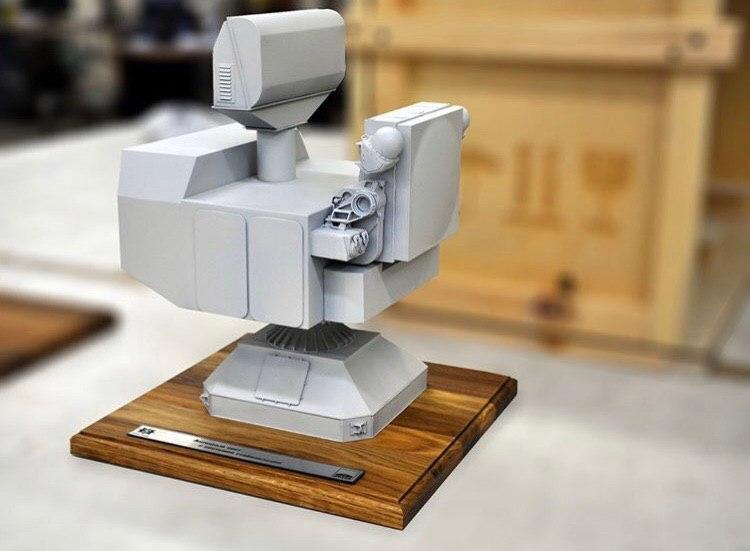
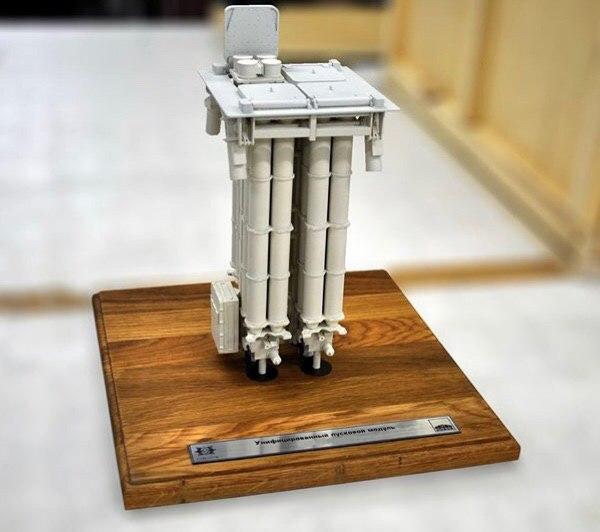
|
|
|